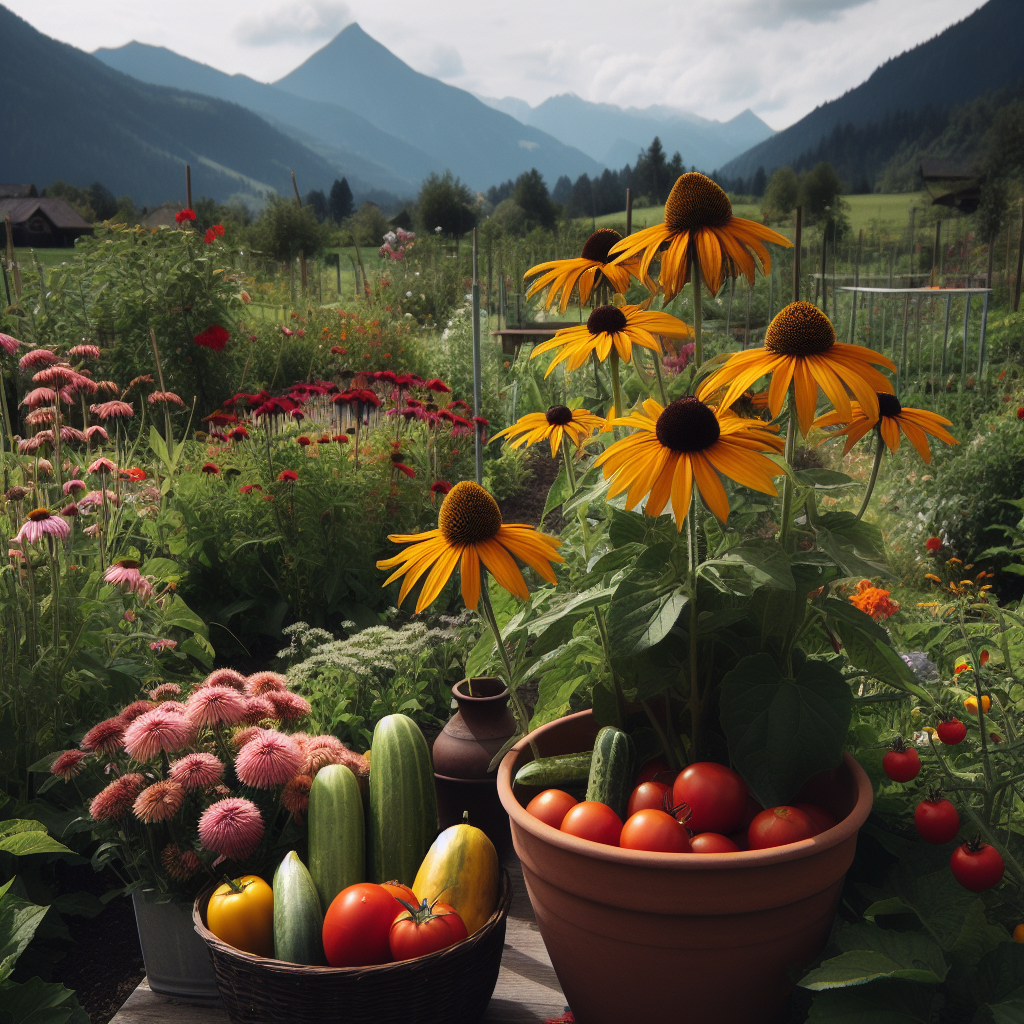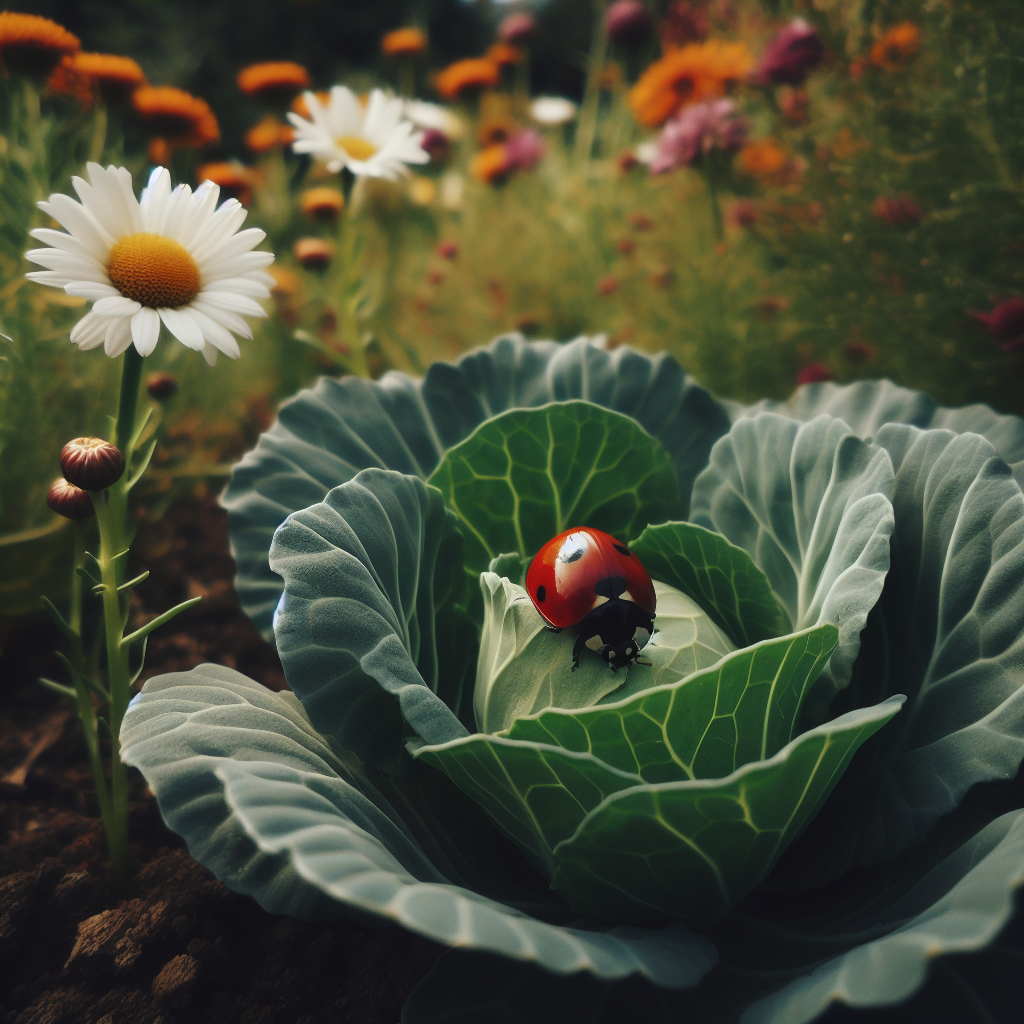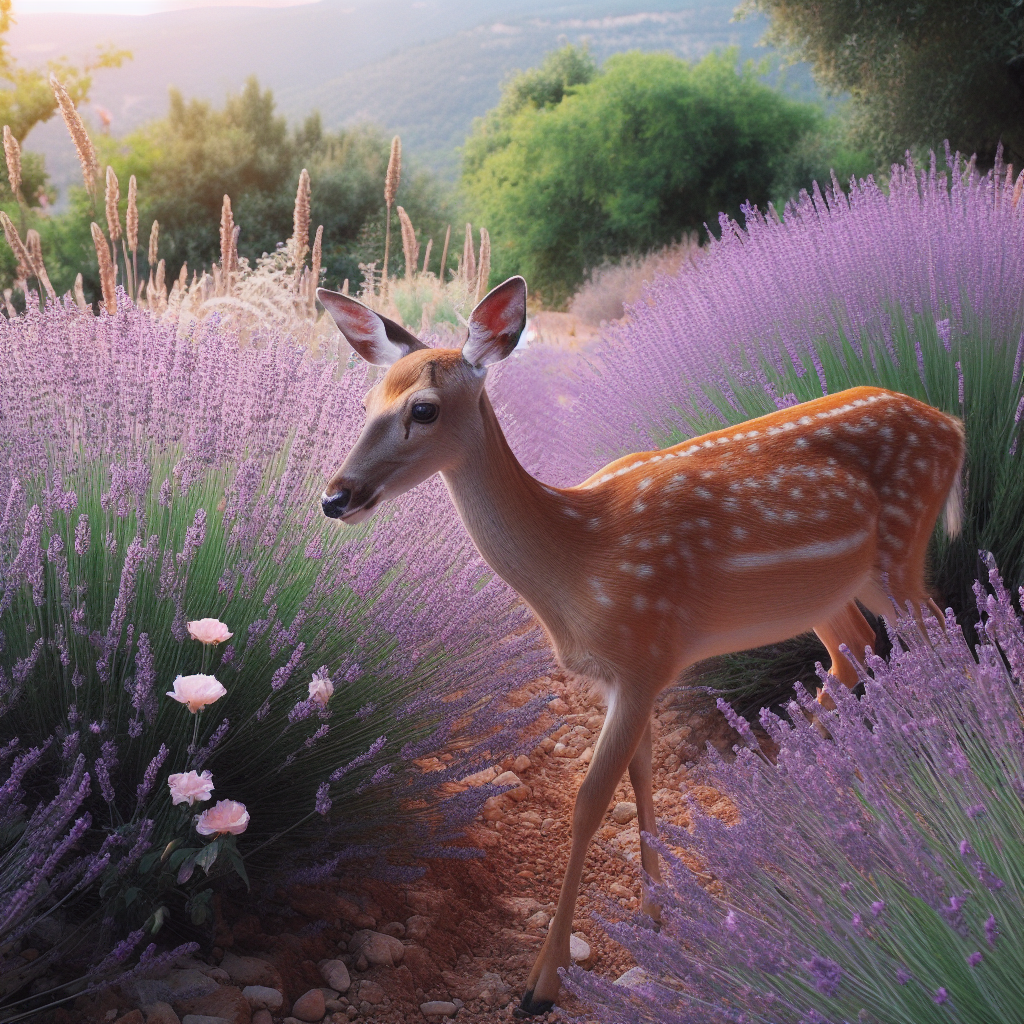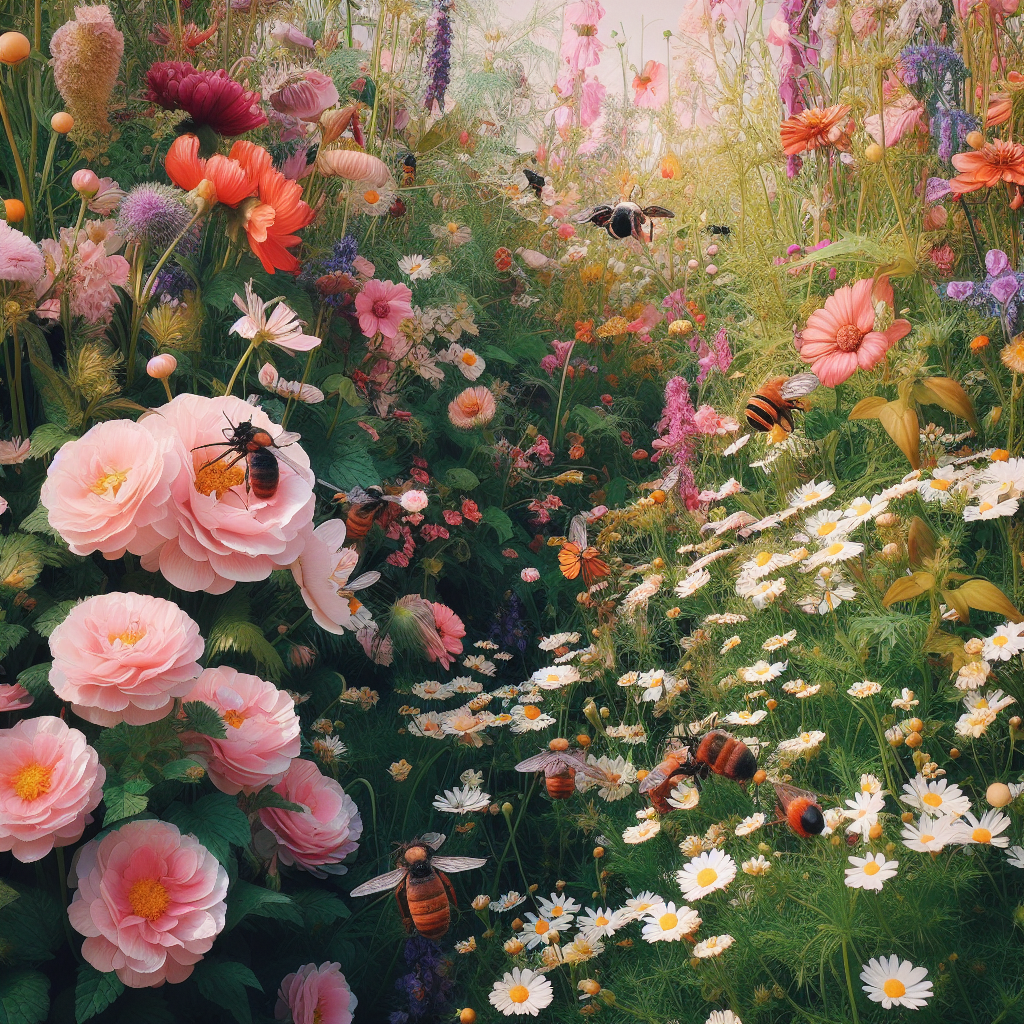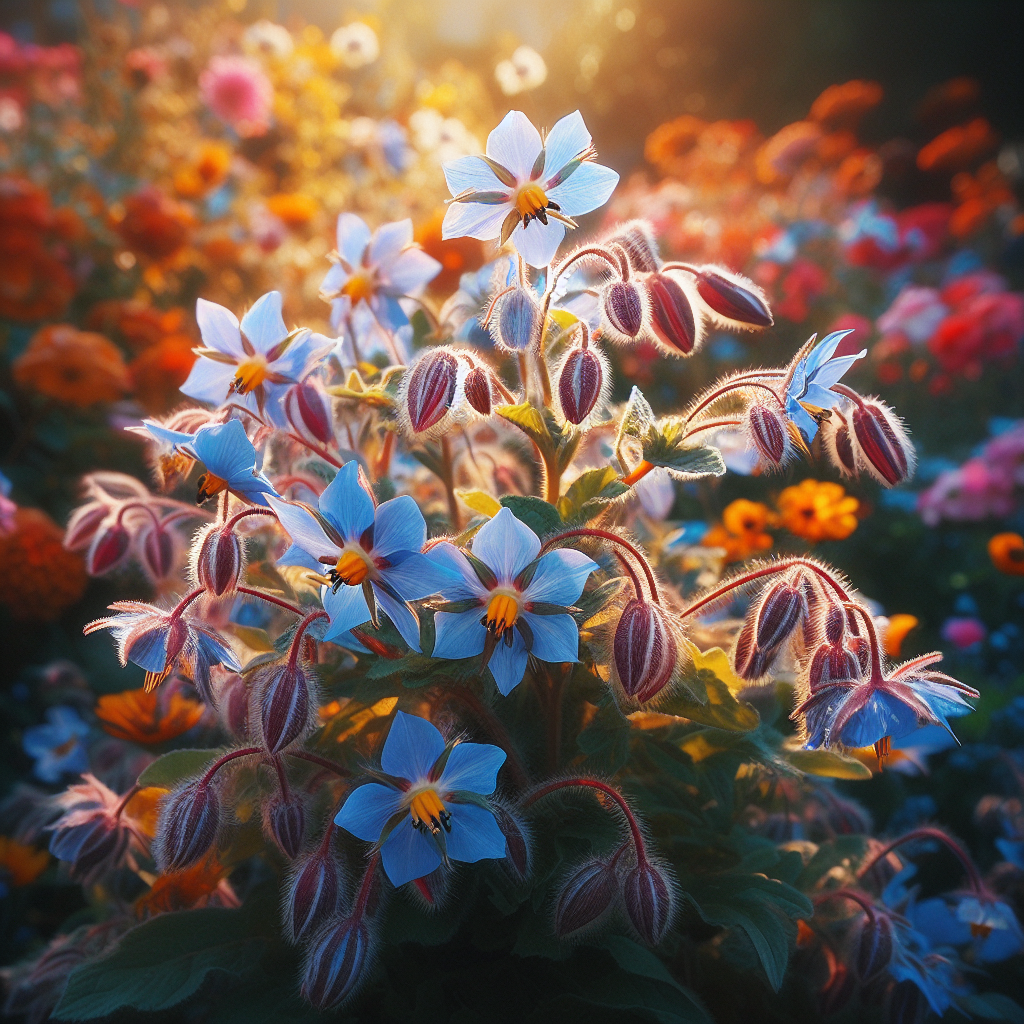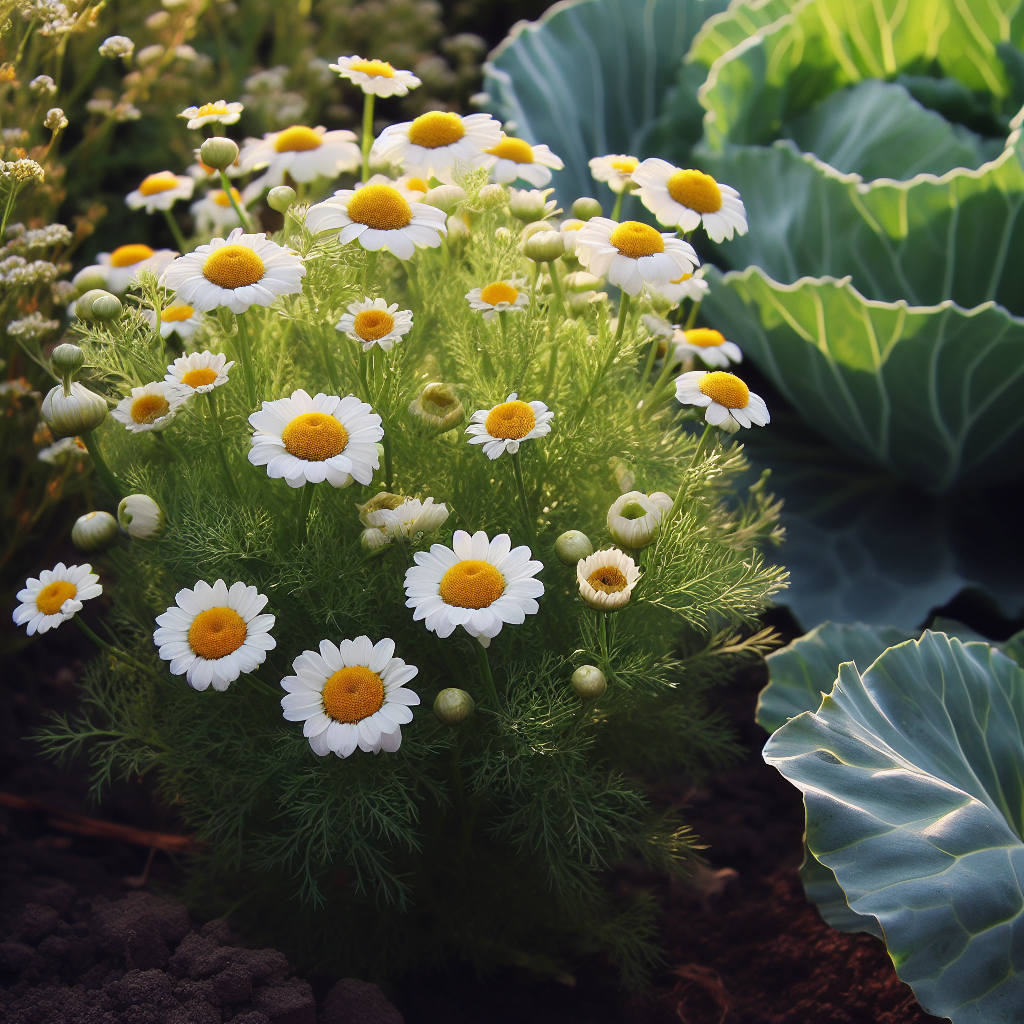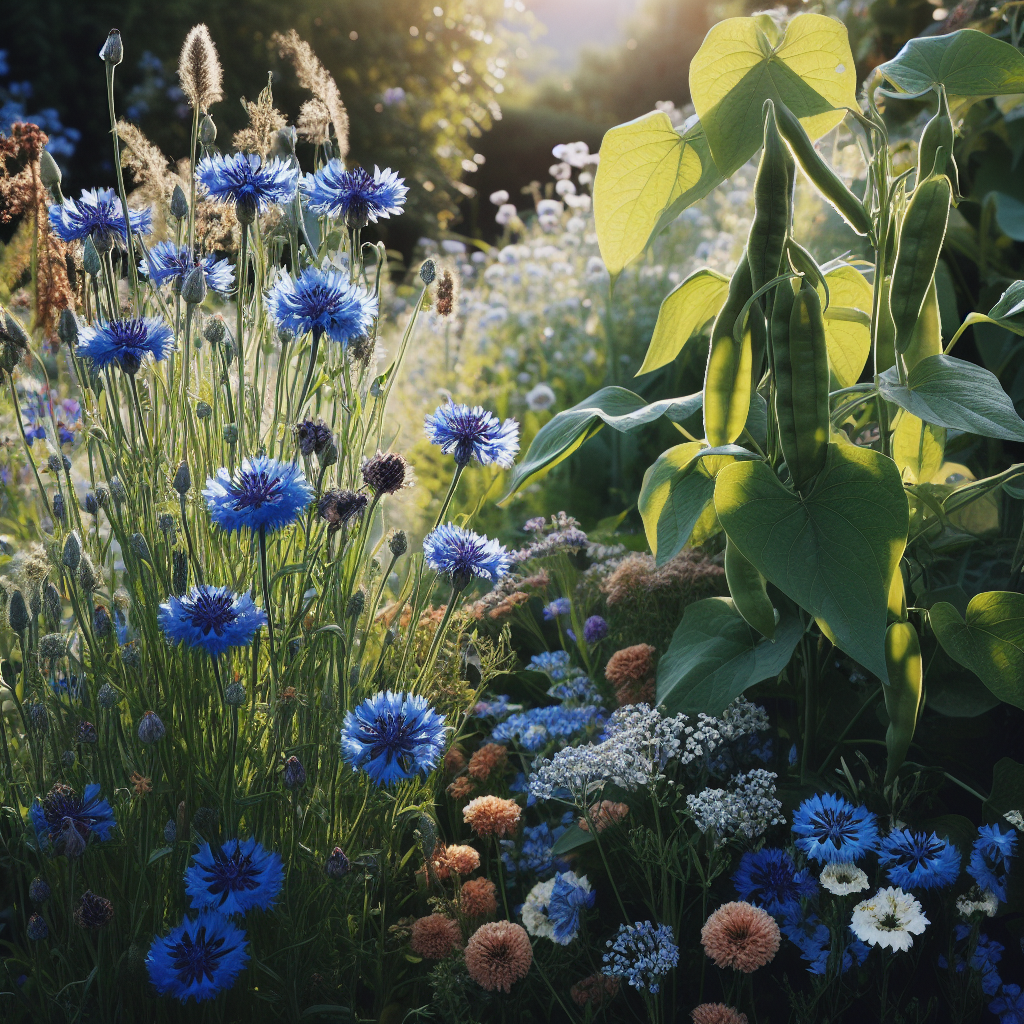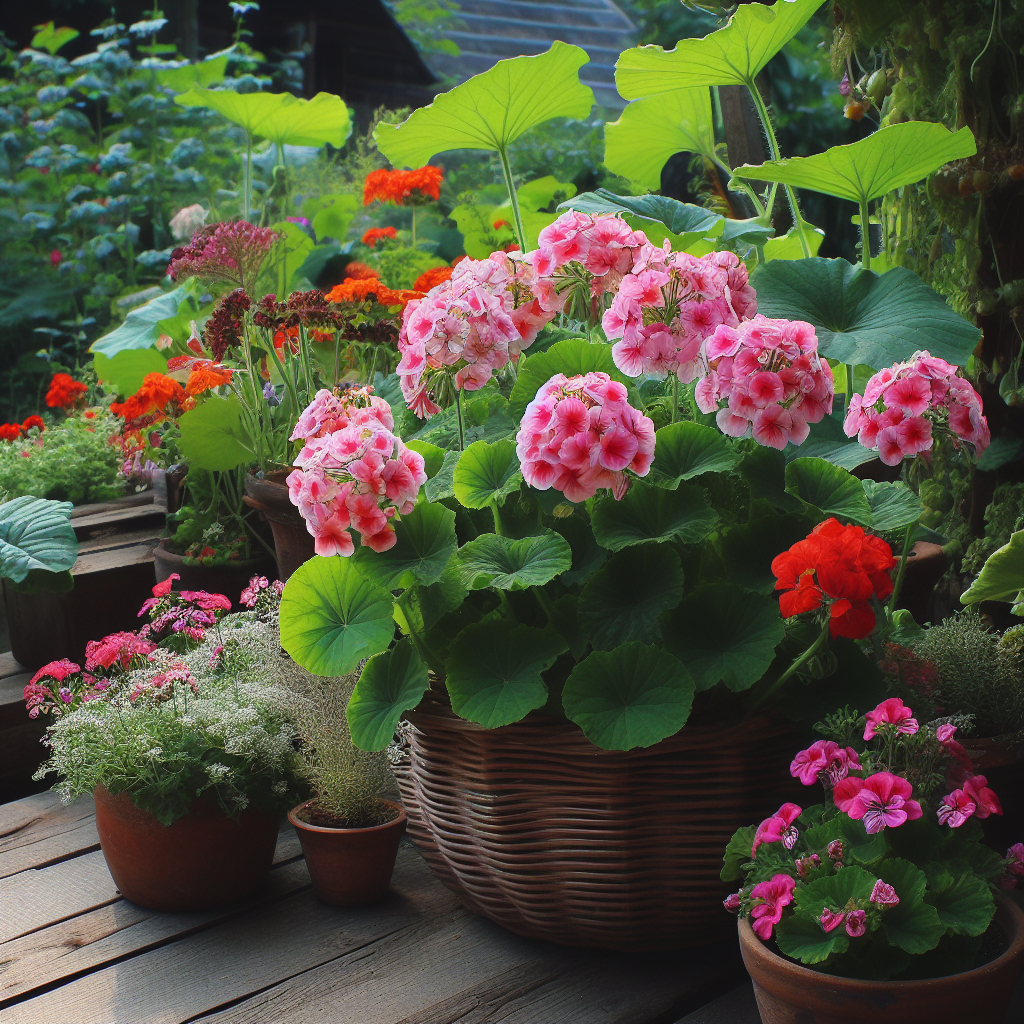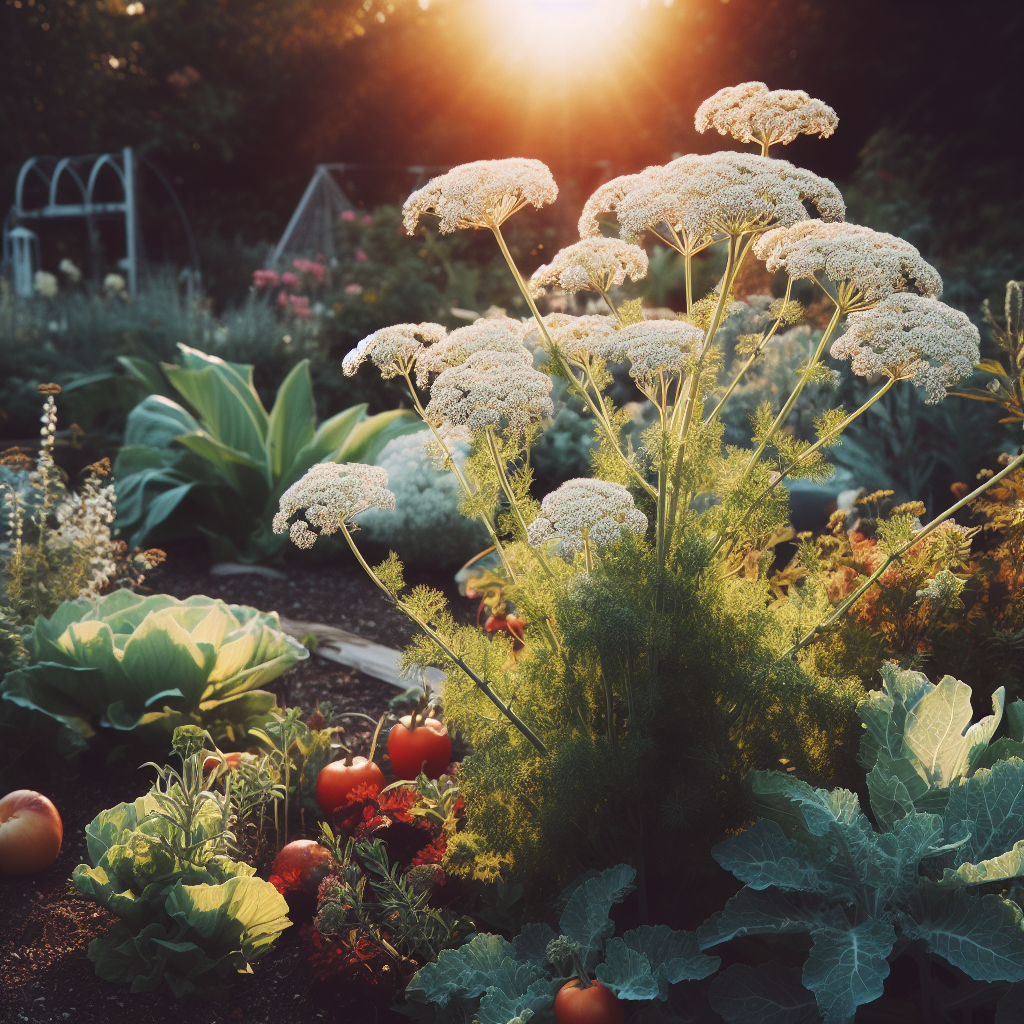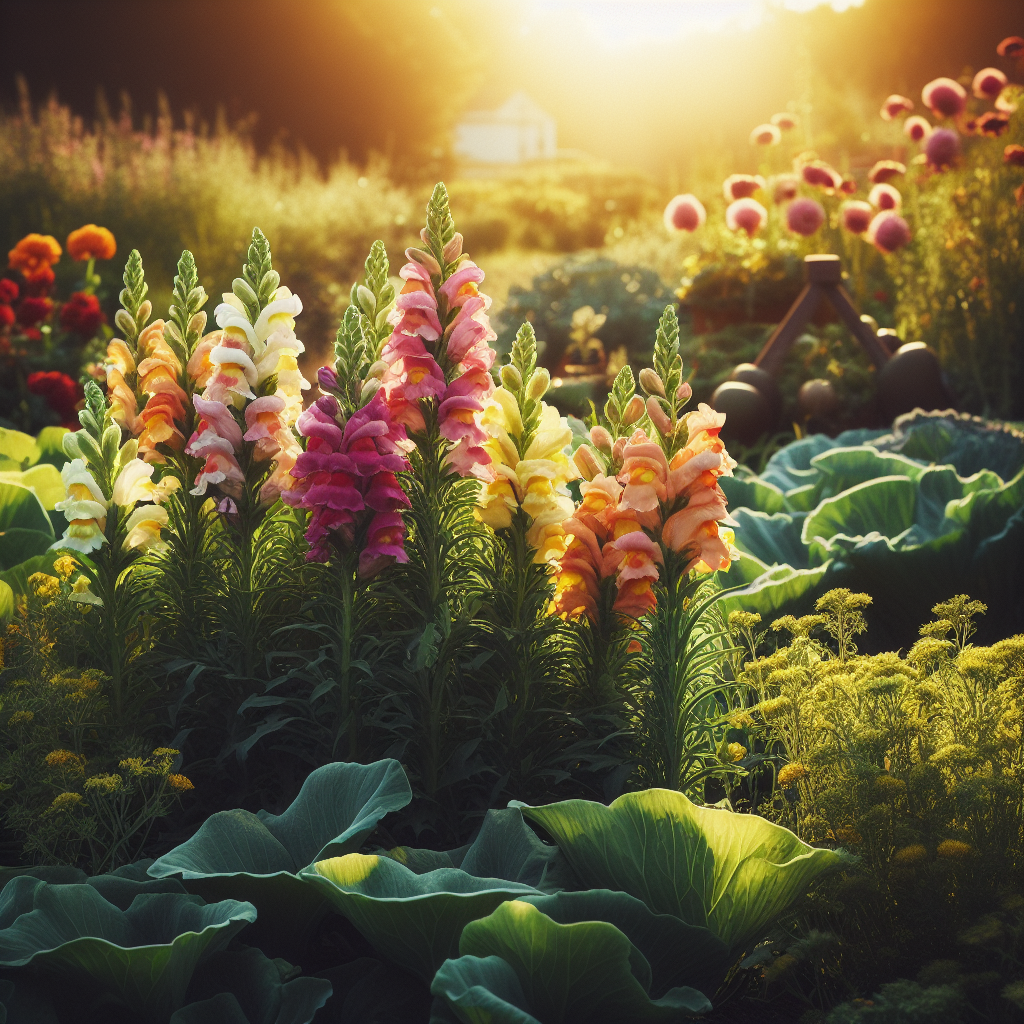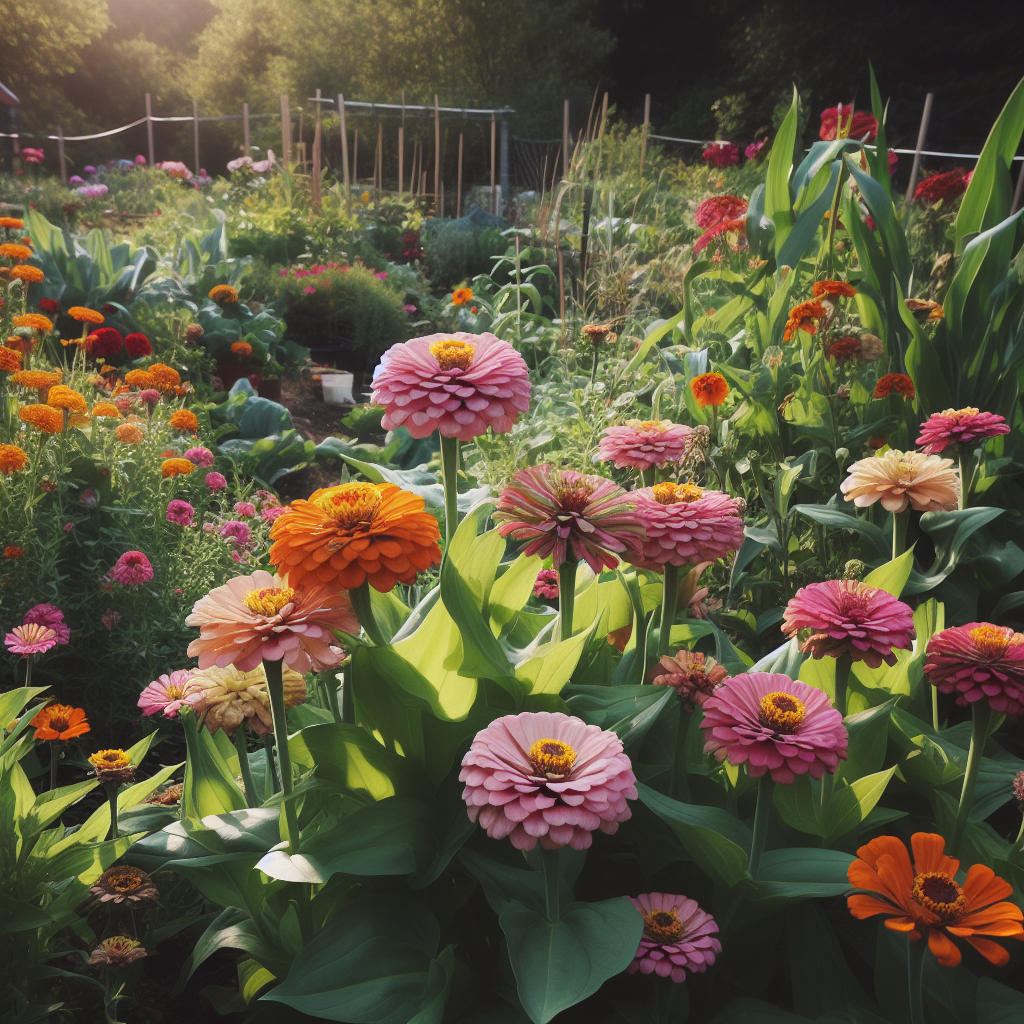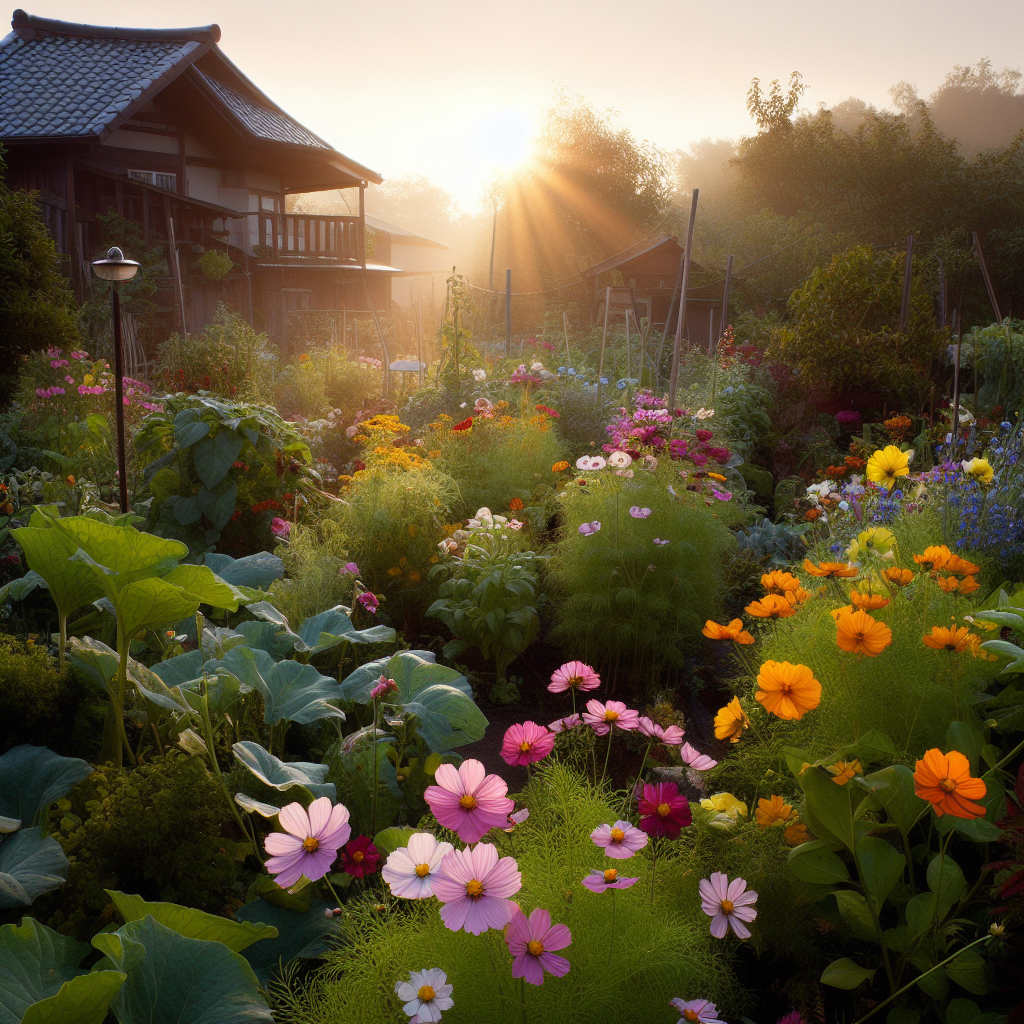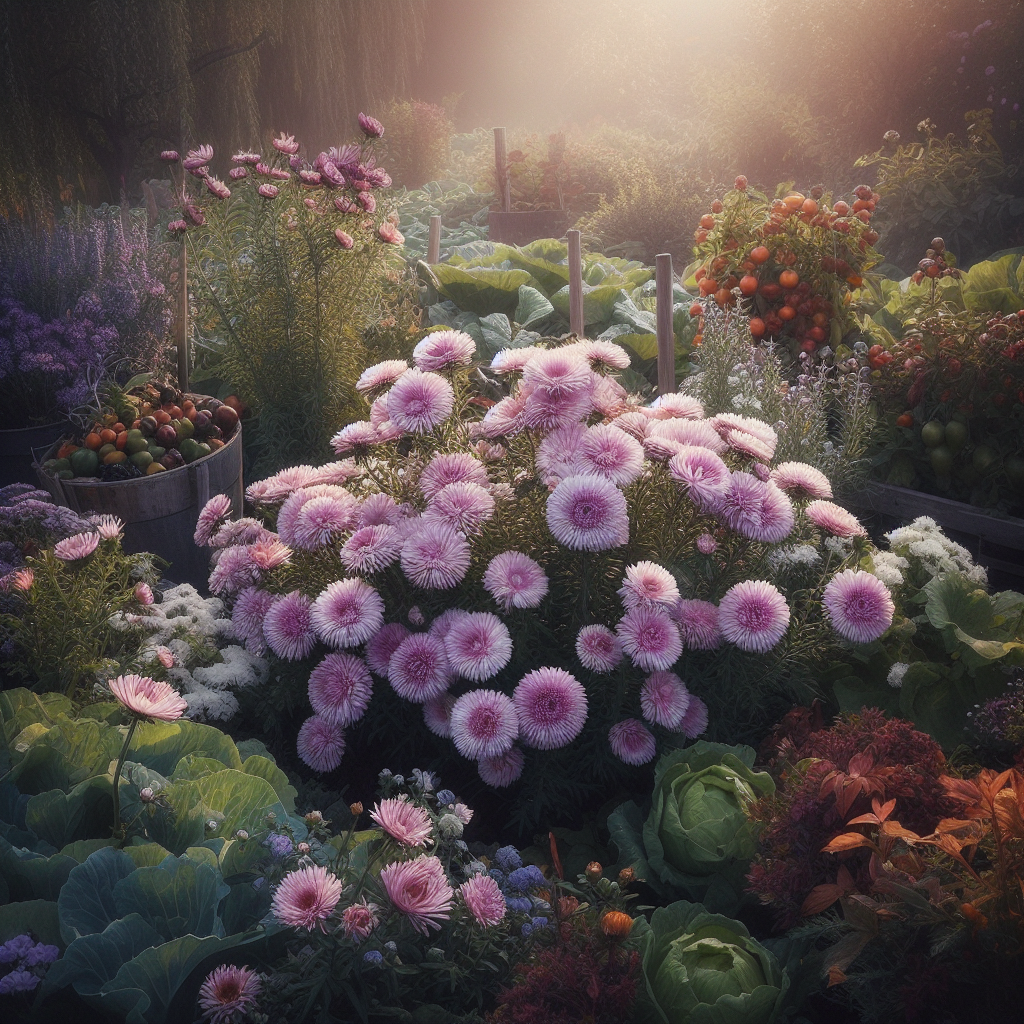Companion Planting: 21 Flowers to grow in Your Vegetable Garden
At first glance, adding flowers into your vegetable garden may seem purely decorative. But incorporating the right blooms amongst your veggie beds does so much more than just look pretty!
It's called companion planting, and when done strategically, surrounding your crops with specific flowers can seriously enhance the health and productivity of your entire garden.
How exactly do flowers help you to grow vegetables? By:
Attracting beneficial insects
Repelling Pests
Improving the health of the garden
Flowers Attract Beneficial Insects
Flowers attract beneficial insects like ladybugs.
The nectar and pollen of flowers entice predatory insects like ladybugs, lacewings, and parasitic wasps, which prey on common vegetable pests like aphids, cabbage worms, squash bugs, and tomato hornworms.
Flowers also attract pollinators like bees, butterflies, bats, and hummingbirds. These pollinators facilitate cross-pollination between your vegetable plants, improving fruit and seed production.
Having flowers next to crops like tomatoes, squash, peppers, and eggplants makes for better yields as a result of increased pollination.
Flowers Repel Pests
Certain flowers also repel pests like deer, rodents, and beetles with their strong scents, unpleasant tastes, or physical obstruction.
Deer dislike strong smelling flowers like lavender.
Flowers Improve the Health of the Garden
Beyond pest control and pollination, flowers improve overall garden health.
Their root systems help aerate soil, capture moisture, stabilize erosion, foster nutrient diversity, and attract beneficial soil microbes.
Plus, flowers provide biodiversity in your garden, creating a balanced ecosystem less susceptible to disease.
Let's explore some of the best flowering companions to plant alongside your veggies. Thoughtful integration of these beauties will take your vegetable garden to the next level in terms of productivity, resilience, and aesthetics.
1. Marigolds (Tagetes)
Marigolds exude thiophene compounds from their roots that suppress nematodes and other soil-dwelling pests.
Their pungent scent deters whiteflies, aphids, and other invaders, while attracting ladybugs, hoverflies, and bees.
2. Calendula (Calendula officinalis)
The colorful blooms of calendula attract pollinators, calendula repels asparagus beetles, aphids, and other pests, and it improves overall garden health.
3. Nasturtiums (Tropaeolum )
Nasturtiums repel squash bugs, beetles, and aphids with their pungent scent.
The trailing vines provide ground cover and prevent weeds.
Their bright edible flowers contain vitamin C and antibiotic/antifungal compounds.
4. Borage (Borago officinalis)
Borage attracts pollinators like bees with its star-shaped flowers, it deters tomato hornworms when planted alongside tomatoes, and its cucumber-flavored leaves can be eaten.
It contains pyrrolizidine alkaloids that protect against predators.
Companion planting borage improves the growth, flavor, and disease-resistance of strawberries.
5. Lavender (Lavandula)
Lavender deters rabbits, deer, moths, mosquitoes, and fleas through the antimicrobial essential oils in its flowers and foliage.
It also supports bees, butterflies, and other pollinators.
6. Chamomile (Matricaria chamomilla)
Chamomile attracts hoverflies, wasps, and other beneficial insects, it improves flavor and growth of onions and cabbages, and its pretty daisy-like flowers can be used for tea.
Its flowers contain apigenin, a phytonutrient that reduces stress in nearby plants. Its roots excrete antimicrobial compounds that limit fungi and pathogenic bacteria in the soil.
Chamomile roots also form symbiotic relationships with soil bacteria that improve nitrogen availability, aiding growth in nearby plants.
7. Sunflowers (Helianthus)
Sunflowers attract bees and butterflies and provide shade for lower-growing companion plants.
As a "trap crop," sunflowers lure aphids and other pests away from neighboring crops. Their extensive roots accumulate and synthesize soil nutrients, enhancing fertility.
8. Dahlias
Dahlias contain pyrrolizidine alkaloids and tannins that make them unpalatable to deer, rabbits, aphids, and Japanese beetles.
They attract bees, butterflies, and hummingbirds.
Their big, colorful blooms provide hiding places from predators for beneficial insects.
9. Sweet Alyssum (Lobularia maritima)
Sweet alyssum attracts hoverflies, parasitoid wasps, and other beneficial insects when planted under crops.
When used as a living mulch, it hinders weeds and moderates soil temperatures. Sweet alyssum releases a honey-like fragrance.
10. Petunias
Petunias repel asparagus beetles, leafhoppers, tomato worms, and aphids. They emit sticky, viscous secretions that entrap and immobilize pests.
Their colorful blooms draw in pollinators, and they can be used as edging plants.
11. Cornflowers (Centaurea cyanus)
Cornflowers produce a protective alkaloid compound called cyanin that helps repel aphids and other sap-sucking insects.
They attract ladybugs, lacewings, hoverflies, and bees.
Their deep roots improve soil structure and quality.
12. Statice (Limonium)
Statice attracts predatory wasps, hoverflies, and tachinid flies to control cabbage moths, tomato hornworms, and other pests
Its long blooming flowers add color to a vegetable garden, and it thrives in poor, sandy soils.
13. Geraniums (Pelargonium)
Geraniums give off a strong scent that helps repel common garden pests like Japanese beetles, aphids, and cabbage worms.
Their nectar-rich flowers attract and provide food for bees, butterflies, and other beneficial pollinating insects.
14. Liatris
Liatris, commonly known as blazing star or gayfeather, has tall spikes of vibrant purple flowers that add structure to a vegetable garden.
Its nectar-rich flowers provide an important late-season food source for Monarch butterflies during migration.
Their dense roots improve water retention and soil structure
15. Yarrow (Achillea)
The fine hairs on yarrow give off phytochemicals that repel moths, Japanese beetles, ants, and flies. Its flowers support ladybugs, parasitoid wasps, and hoverflies.
Yarrow improves drainage with its extensive root system, its flowers attract ladybugs, parasitoid wasps, and hoverflies, and it enhances the essential oil content and growth of aromatic herbs.
16. Snapdragons (Antirrhinum majus)
Snapdragon flowers contain antifeedant chemicals like quercetin that overwhelm pests with a bitter taste, limiting feeding.
The flowers also attract pollinators and predatory insects, its fragrance deters aphids and other pests, and it thrives in poor soils.
17. Coneflowers (Echinacea)
A Prairie Classic The bold, daisy-like blooms of coneflowers attract ladybugs, lacewings, and other beneficial insects that prey on garden pests.
They also lure birds with their seed heads, which contributes to natural pest control.
Related Article: Creating a Garden Sanctuary for Birds
18. Salvia
With nearly 1,000 varieties, salvias come in a rainbow of colors and ward off pests like aphids, whiteflies, and slugs when planted by tomatoes, broccoli, carrots, and melons.
Their edible flowers and foliage attract pollinators, and their extensive root systems enhance soil fertility.
19. Zinnias
Zinnias emit a substance that helps repel certain insects, like whiteflies, squash bugs, and aphids, that feed on vegetables. Acting as a "trap crop", they divert these pests away from vegetables.
They also produce lots of bright, nectar-rich flowers that attract and feed bees, butterflies, hummingbirds and other pollinators.
20. Cosmos
Cosmos will not only bring in the beneficials, but they also are a great for pest control.
They release chemicals from their roots that deter certain pests like nematodes, wireworms, and beetles that can damage vegetable roots and foliage.
Their shallow root systems help aerate soil. The open daisy flowers provide insects with landing platforms and nectar.
21. Asters
Asters bring a burst of color to your vegetable garden with their daisy-like blooms in shades of pink, purple, and blue.
These flowers attract beneficial insects, including ladybugs and predatory wasps, helping control pests naturally. They repel armyworms, blister beetles, and other pests.
Asters also have a sprawling growth habit that can serve as ground cover, protecting soil and preventing erosion.
While it is fascinating to learn some of the science behind why these flowers make such great companions for our vegetable plants, it is not necessary to know all the facts.
If you simply plant lots of different flowers you will succeed and having a much more healthy vegetable plot than one devoid of blooms.
So go ahead, fill those open spots in your vegetable garden with some charming blooms. You'll be rewarded with a vibrant, thriving garden that balances beauty and productivity. Happy companion planting!
Related Articles:
Eco-Friendly Pest Control: Releasing Beneficial Insects
A Sustainable Approach to Pest Control
A Look into Sustainable Gardening Practices

